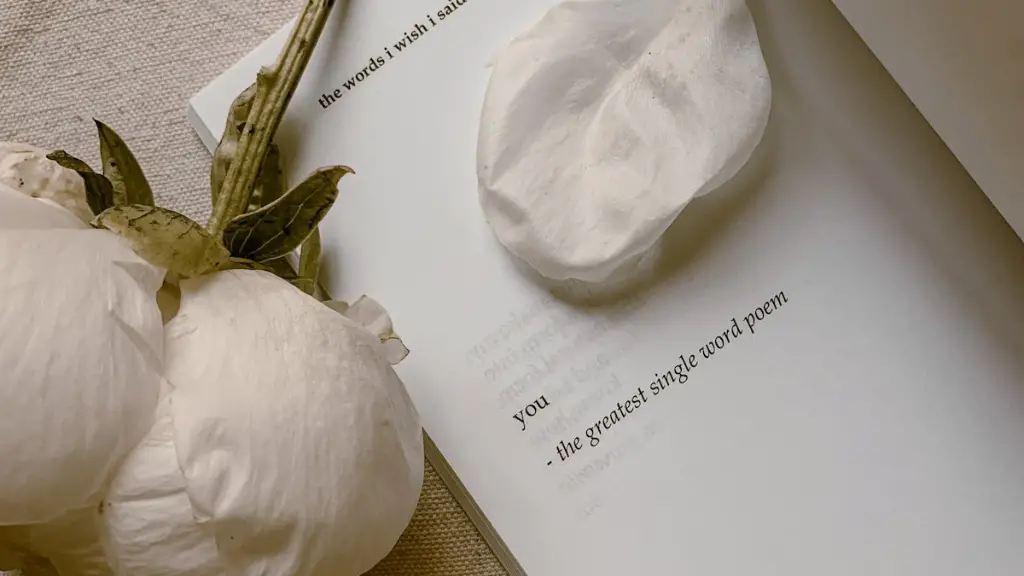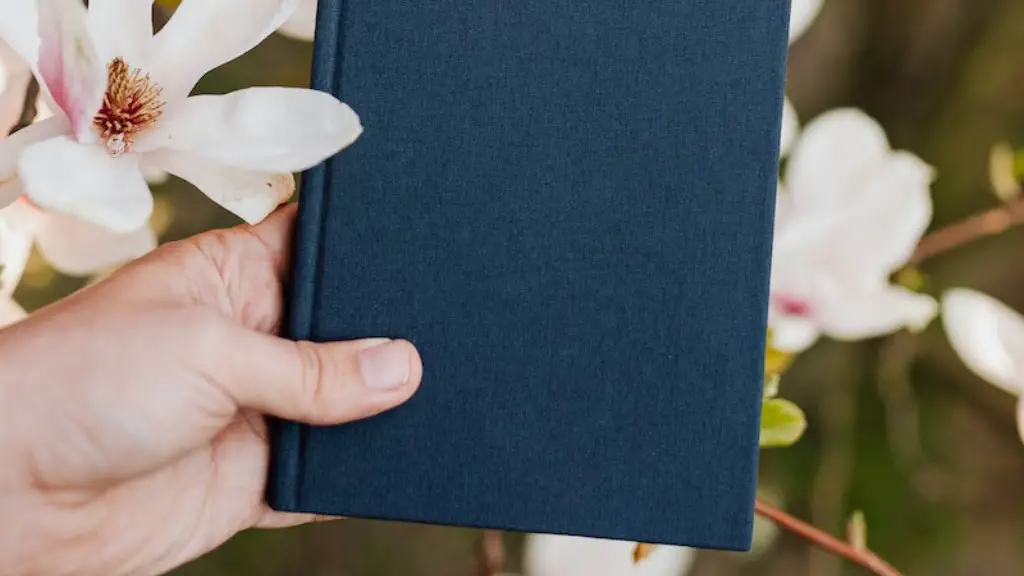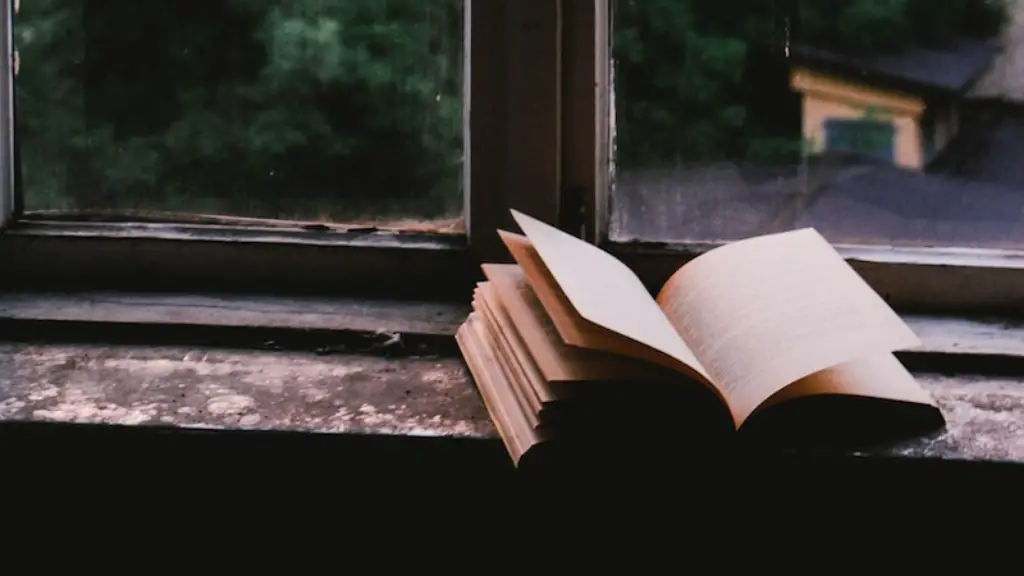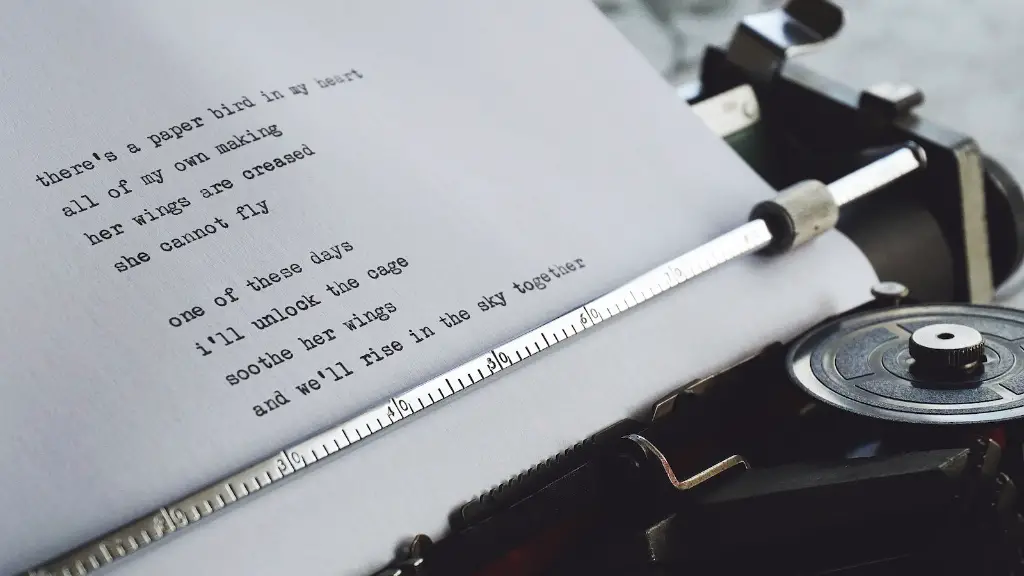What is Sound Pattern in Poetry?
Most of us know poetry when we hear it, however, we might not know why it captivates us. A key feature of poetry that catches the ear is its sound pattern, which often consists of rhythm, rhyme, and alliteration. All these elements when combined, can create a powerful and memorable literary experience.
Rhythm is a repetitive beat that poetry has and which becomes familiar to the reader and listener. It is created by the poet’s use of pauses, syllables, sounds, and words that give the poem a consistent beat. This makes it easier to remember what the poet is saying and to understand the poem.
Rhyme is a repeating pattern of two or more words that create a musical sound. Poets use rhyme to make the poem easier to follow and to emphasize certain words. It can also make a poem more enjoyable and catchy as well.
Alliteration is the repetition of consonant sounds within a phrase. For example if the words “suave” and “smile” were used in the same phrase, the “s” sound would be repeated. This sound repetition adds an extra layer of emphasis, which can not only draw the reader’s focus, but can also make the phrase more interesting and enjoyable.
The combination of these three elements is what makes poetry so appealing. The sound pattern encourages the reader to enjoy the flow of the piece, which in turn creates meaning and emotion. The sounds help the poet convey their message to the audience, in a simpler and more impactful way.
Sound pattern is also used to draw attention and create memorable moments in a poem. A poet can use alliteration, for example, to emphasize a word or phrase and make it stand out. Similarly, a poet can use rhythm and rhyme to create a catchy and rhythmical chorus to stick in the reader’s mind.
The great thing about sound pattern is that it is not confined to one type of poem. It can be found in many types, including haikyus, sonnets and free verse. What’s more, an author can choose to use sound pattern in certain sections of a poem, or to keep a consistent sound pattern throughout; the choice is up to the poet.
Research and Perspectives
With the rise of computerised text analysis tools, research into sound has become easier. Evidence suggests that readers recall and remember more information when sound pattern is used. For example, a 2004 study by the University of Leeds, showed that a poem with sound pattern was more likely to be remembered and understood than one without.
Studies have also compared the effects of sound pattern in different poem structures. The same study by the University of Leeds found that rhyming couplets were more memorable than tercets. This is thought to be due to the fact that rhyming couplets clearly emphasise the repeated sounds, which readers found easier to understand.
Another research paper, from the University of Toronto, tested the effects of alliteration on the reader’s recall. The study found that readers were more likely to recall a phrase when it contained alliteration. This suggests that alliteration makes it easier for a reader to remember the poem’s meaning and message.
These findings highlight the impact that sound pattern can have on a reader’s understanding and recall of a poem. They suggest that sound pattern has an important role to play in creating memorable and powerful pieces of literature.
Analysis and Insights
Looking into the research, it is clear that sound pattern plays an essential role in a poem’s success. With this in mind, it is important for an author to consider how they use sound pattern in their work. For example, a poet might choose to use a consistent rhythm, to create consistency throughout the piece. Alternatively, they may choose to only use sound in certain sections of the poem.
However, sound pattern should not be used in excess, as too much of it can make a poem difficult to understand and be distracting. Additionally, it is important to remember that literature is more than just sound, and that the imagery and storytelling are also important in creating powerful works.
Overall, it is evident that sound pattern is an important part of poetry, and one which should definitely be considered by authors. When used correctly it can make a poem powerful and memorable, engaging the reader in its meaning and message.
How Sound Pattern Can Enhance Other Genres
Sound pattern is not limited to poetry, and can also be used to enhance other literary genres. This can be seen in the popularity of rap and spoken word music. These genres rely heavily on sound pattern to convey emotion and meaning. This has popularised poetry, as traditional written poems can often be enjoyed and understood in a similar way to rap songs.
Other genres have also started to embrace sound pattern. Novels and short stories, traditionally considered more formal than poetry, are now being written in a more poetic style. Authors are experimenting with rhythm and rhyme, often aimed at creating a certain emotion or atmosphere.
Sound pattern is an important and versatile literary tool that can be used in a variety of genres. Its use can help to engage readers and make the author’s work more memorable and impactful and is something that should be explored.
How to Experiment with Sound Pattern
For those looking to explore sound pattern in their work, there are many ways to do so. Those new to sound pattern can practice with structured forms such as haikyus and ballads. This allows for experimentation and understanding of how sound pattern works within a certain structure.
Once a grip on form has been established authors can start to experiment with other genres, such as spoken word, rap or fiction. Here authors can use sound pattern to create something unique, adding further depth and impact to the story.
Experimentation is key, as there are no set rules when it comes to sound pattern, the author can be as creative as they like. Making mistakes and learning from them can help a writer understand what sound pattern works and how to use it to their advantage.
Conclusion
In conclusion, sound pattern is an important and often underestimated literary tool. Authors should consider the use of sound pattern in their work, as its potential to create engaging and powerful pieces often goes unrecognised. While it can take some time to learn and understand, sound pattern can be a great way to express emotion and make an impact on the reader.





